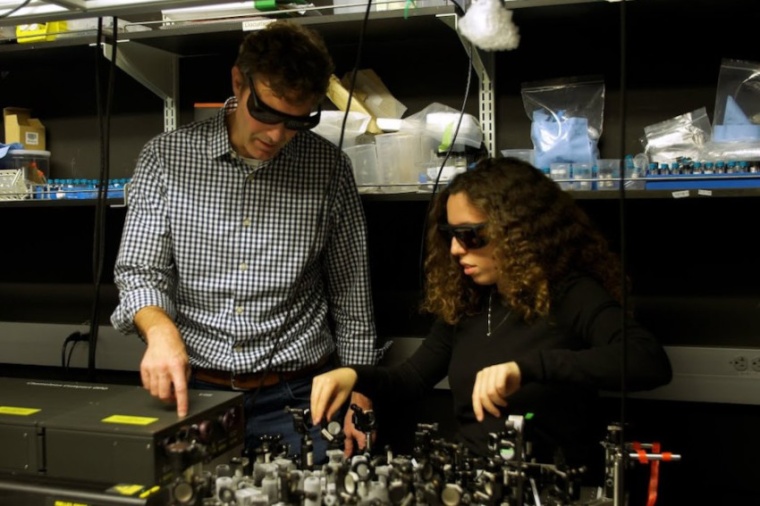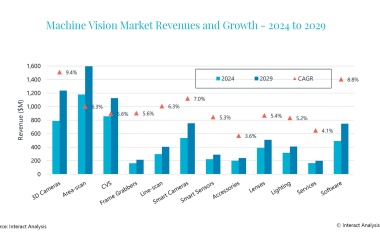Quantum entanglement at the nanoscale
A new, smaller and more energy efficient method of creating coveted photon pairs.
Currently, the most efficient way to create photon pairs requires sending lightwaves through a crystal large enough to see without a microscope. Now, a team led by Columbia Engineering researchers and collaborators around P. James Schuck, describe a new method for creating these photon pairs that achieves higher performance on a much smaller device using less energy. These findings represent a significant step forward in the field of nonlinear optics, which is concerned with using technologies to change the properties of light for applications including lasers, telecommunications, and laboratory equipment.

“This work represents the embodiment of the long-sought goal of bridging macroscopic and microscopic nonlinear and quantum optics,” says Schuck. “It provides the foundation for scalable, highly efficient on-chip integrable devices such as tunable microscopic entangled-photon-pair generators.” Measuring just 3.4 micrometers thick, the new device points to a future where this important component of many quantum systems can fit onto a silicon chip. This change would enable significant gains in the energy efficiency and overall technical capabilities of quantum devices.
To create the device, the researchers used thin crystals of a van der Waals semiconducting transition metal – molybdenum disulfide. Then they layered six of these crystal pieces into a stack, with each piece rotated 180 degrees relative to the crystal slabs above and below. As light travels through this stack, quasi-phase-matching manipulates properties of the light, enabling the creation of paired photons. These results represent the first time that quasi-phase-matching in any van der Waals material has been used to generate photon pairs at wavelengths that are useful for telecommunications. The technique is significantly more efficient than previous methods and far less prone to error.
“We believe this breakthrough will establish van der Waals materials as the core of next-generation nonlinear and quantum photonic architectures, with them being ideal candidates for enabling all future on-chip technologies and replacing current bulk and periodically poled crystals,” Schuck says. “These innovations will have an immediate impact in diverse areas including satellite-based distribution and mobile phone quantum communication.”
Schuck and his team built on their previous work to develop the new device. In 2022, the group demonstrated that materials like molybdenum disulfide possess useful properties for nonlinear optics – but performance was limited by the tendency of light waves to interfere with one another while traveling through this material. The team turned to periodic poling to counteract this problem with phase matching. By alternating the direction of the slabs in the stack, the device manipulates light in a way that enables photon pair generation at miniscule length scales. “Once we understood how amazing this material was, we knew we had to pursue the periodic poling, which could allow for the highly efficient generation of photon pairs,” Schuck says. (Source: Columbia U.)
Link: Schuck Lab, Dept. of Mechanical Engineering, Columbia University, New York, USA











